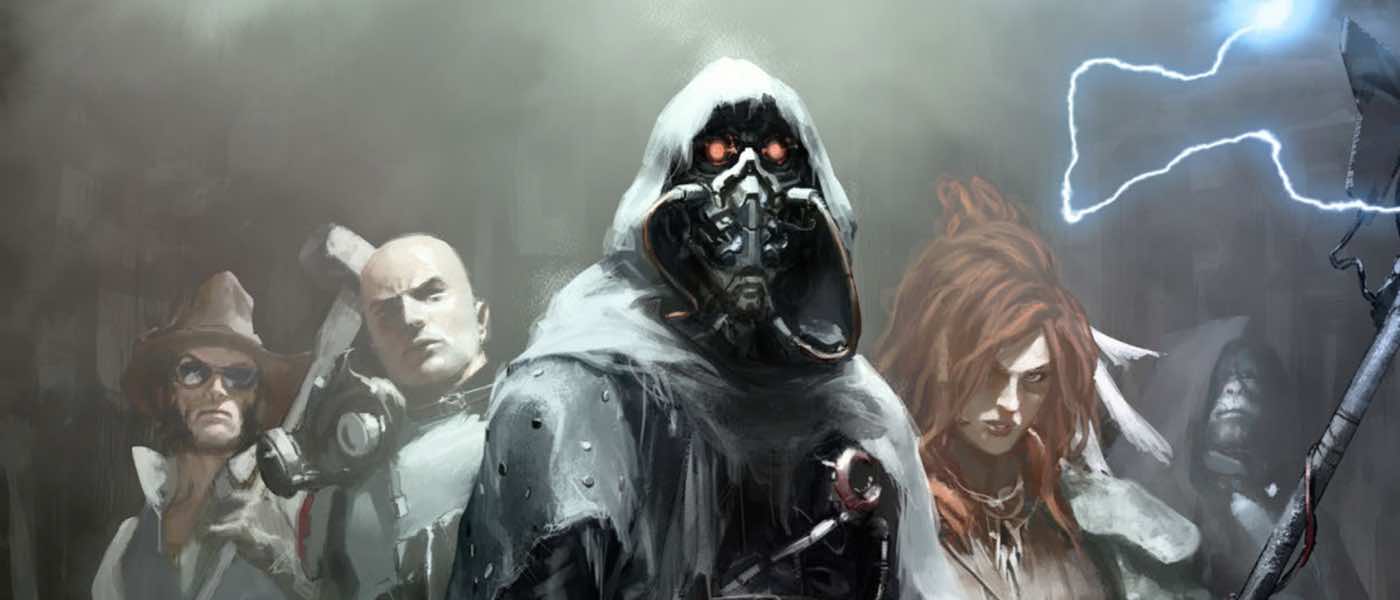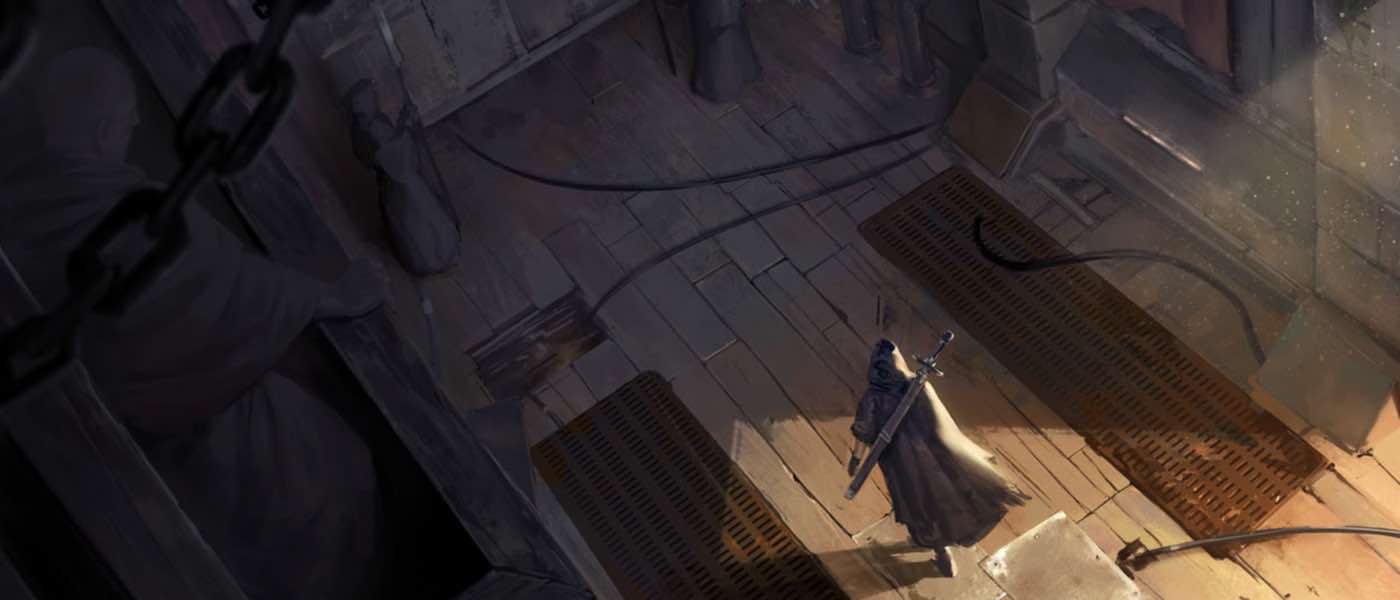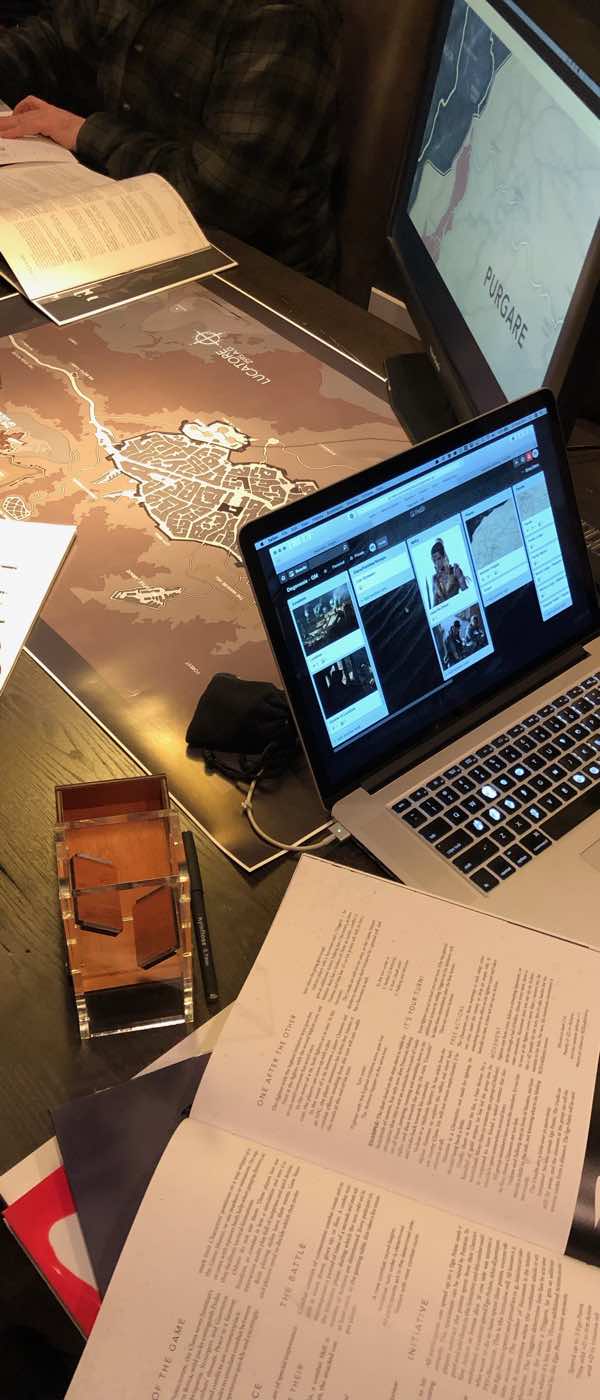Degenesis: Rebirth – The Actual Play Review
I’d picked up the Degenesis rule books months ago. I’d pored over them, ordered all the published adventures, and written a glowing review (which you’ll probably want to read before this post if you want a broader understanding of the game). Finally I’d found a game that delivered that same feeling of discovery and amazement that RuneQuest had first given me many years earlier. Which is why I approached the act of actually running the game with some trepidation. As anyone who has played tabletop RPGs for a while will tell you, the easiest way to ruin a promising game is to actually play it.
The flaws you glossed over when reading it become hurdles. The flame of enthusiasm sputters as you realize the game’s central premise doesn’t provide sufficient fuel.But what choice is there? You have to play the game, hoping that it will hold up to the stresses inflicted on it by players and GM alike, that it will bear the weight of expectation. Otherwise it’s just a lovely artifact, a coffee table book to glance through wistfully in spare moments.
Six sessions in, I am happy to report that *Degenesis *has withstood the rigors of actual play and won over everyone at the table. This game isn’t just a gorgeous, horrifying, meticulously-crafted world, it’s a clever set of rules that purposefully reinforce a specific style of play.
Understated Elegance
Degenesis is sometimes described as some sort of alternate Mad Max setting. This is unfortunate because that shorthand fails to convey the complexity of the game’s setting and the range of potential activities for player characters. The world of Mad Max is, like Degenesis, visually stylish. But aside from driving fast and dodging bullets in a scrubby desert, there’s not much for characters to do in that world.
In Degenesis intrigue is everywhere. Secrets abound. Information is power. Alliances of convenience are frequent. If something seems obvious, you’re probably not digging deep enough. And there’s an ambient threat actively working to destroy humanity. This abundance of available plots is easy to ascertain as you make your way through the rulebooks, but it’s even more obvious once you start playing. The crosscutting aims of multiple cults, clans, and other forces makes it easy to generate complex situations that player characters must navigate.

Here’s a thing about Degenesis that sometimes gets missed at first glance: It’s deadly, but that’s how the game deliberately pushes you away from murder hoboing. Indiscriminate violence is mechanically risky for players. It also invites in-world blowback. In Degenesis there aren’t many loners; most characters you meet are enmeshed in a social fabric of obligations and alliances.
These factors nudge characters toward careful planning, cautious investigation, and extensive interaction with NPCs. The role of social combat can’t be overstated; it can mean the difference between life and death. Because it’s so important, a third of the game’s 36 skills are designed for understanding, manipulating, controlling, deceiving, cowing, and leading NPCs (not to mention resisting such attempts by others).
Two elements of social combat are particularly enjoyable. First, because there are so many different social skills, the approach a character takes can be tailored to their personality. To persuade a group of riled up Anabaptists that they should turn their anger toward an outsider, a character could encourage them to follow their sense of duty using the Leadership skill. Another character might try to get the same result using the Expression skill to clearly articulate of the logical rationales for them to turn on the outsider.
Second, skills in Degenesis can be combined. On paper this may not sound like much, but at the table it can give enterprising players room to deliver unexpected and exciting outcomes. For example, a character who makes a successful Domination roll followed by a successful Expression roll can deliver a roaring battle cry that cows opponents and makes them less capable in combat.
Because there are several social skills I made a cheat sheet for reference in play. We’ve since become more conversant with the differences between these skills, making it less necessary.
Overall the game’s mechanics don’t call attention to themselves with flashy innovations, but in play they are fluid, robust, and well-tuned to the gritty, dangerous setting.
In Thy Blood
I ran my players through In Thy Blood, which is the first in a triptych of increasingly sophisticated and dangerous Degenesis: Rebirth adventures published by Sixmorevodka. Don’t worry, I won’t reveal any spoilers here.

The adventure takes place in Lucatore, a small but important Anabaptist-controlled city in Northern Purgare. Something bad has happened there, and the player characters are called in to investigate. As you might suspect, determining what’s really going on is challenging. Also, because this is a Degenesis adventure, there are all sorts of interesting NPCs and intersecting bonds between them.
A hardbound 104-page book (also available in PDF), In Thy Blood contains gorgeous maps of Northern Purgare and Lucatore, dozens of the sumptuous illustrations that are a hallmark of Degenesis, and a cutaway drawing that provoked audible gasps from my players when I revealed it to them. It also contains information on over a dozen key NPCs. By “information” I don’t just mean stats. NPCs in all three of the published adventures are exquisite. They all come with unique motivations and notes on relationships with other important characters. They’re all three-dimensional and interesting in their own right. With one or two exceptions, even the bad guys here are sympathetic figures.
This points to another aspect of Degenesis that bears repeating: this is not a world of good versus evil. That’s not to say bravery and selflessness can’t be found here. There are just few clear boundary lines to help players decide who to support and who to confront. That’s on them. And watching players unravel the secrets of In Thy Blood and wrangle amongst themselves over how to deal with that knowledge was a joy for me as a GM.
In Thy Blood, like its brethren, is structured as a linear narrative. The book makes it clear up front that the GM should use bits and pieces of it, shift the order of events as needed, or try to hew to the as-written story as needed. But the adventure doesn’t really present forks in the road along the way with obvious callouts to remind the GM of how the flow of the adventure could be easily altered.

I’ve been gamemastering for years, and usually I create my own adventures. So it’s difficult for me to put myself in the shoes of a new GM. With that caveat, Degenesis isn’t a game I’d recommend to those who are new to roleplaying (unless they have an experienced GM running the game for them), and I don’t think In Thy Blood is well-suited to first-time GMs either.
That’s not to say it’s a bad scenario; it’s one of the most compelling adventures I’ve ever run, whether published or of my own creation. But it requires effort. That’s really a central theme of the Degenesis experience as a whole. You have to put some work into understanding the world as a player, and as a GM you have to put in even more work absorbing the world and preparing adventures. Do that and the game rewards you in spades.
Starting the Campaign
I readied myself to run In Thy Blood by skimming it, getting a sense of the overall flow of the adventure and the central characters. I then read it all the way through from cover to cover, taking notes about how to tweak it to suit the player characters and determining the most important relationships between events and NPCs.
Before character creation I determined that I wanted them to all have grown up in Lucatore together. They then went their separate ways for a time, each joining a cult of their own choosing before returning to Lucatore as the adventure started. This gave me hooks into the setting, reasons the player characters cared about the town, relationships with published NPCs and those of my own creation, and an opportunity to give them some minor advantages in dealing with the locals. This was particularly important because there are only three player characters, and I wanted to give them a slightly less threatening onramp to the game world.

I also took the advice of Degenesis veteran @crowcawings. She advised me to dole out information about the game world slowly, keeping it narrowly confined to only the necessary bits first. I’d employed a similar approach with complex settings like Glorantha in the past, and it worked quite well here as well. In that vein, I trimmed the list of available cults and clans. I did this for two reasons: first, to not overwhelm the players with options in a world they were still discovering, and second, to provide reasonable assurance that the cults they chose wouldn’t be operating in direct opposition to each other. We’ve played together for many years and the players trusted that I was doing this for mutual benefit. I’m glad we took that approach.
We all have our failings. One of mine is that I’m forever fiddling with my information management setups, both for work and for gaming. But recently I’ve settled on a solution for gaming that seems to work. I use Trello for long-term planning, knowledge-sharing with players, and record-keeping. All the player-facing information goes in one Trello board, and a second board contains all the GM-only material. We use Slack for confirming session times and talking about the game. I can also feed tidbits of character-specific knowledge to individual players in Slack. For jotting down reminders ahead of session and taking brief bullet notes in-session, I use a small physical notebook.
The players already had been communicating with me and each other in Slack about their character concepts, so when we met for the first session building out characters was relatively swift. John’s dutiful Hellvetic, Matt’s skeptical Spitalian, and Em’s outgoing Judge were ready for action. I had them encounter each other at a small village in Northern Purgare, where events led them to pursue an escaped Apocalyptic convict toward Lucatore.
At that point they were embroiled in the events of In Thy Blood. I printed out the regional and city maps for reference, used an external monitor to show images I pulled from the PDF, and built out a few audio playlists for appropriate ambiance. It wasn’t necessary, but I even modified some dice to make reading dice pool results a bit faster, though I must say my Degenesis dice aren’t nearly as nice as some I’ve seen online.
There’s an old army saying: No plan survives first contact with the enemy. In roleplaying, the player characters will always force a GM to shift the plan, and this adventure in particular could never really be played out exactly as written because of how tightly it was scripted. But because I knew the key events and understood the motivations of the NPCs, it wasn’t hard to adapt to player actions in the moment. A few events transpired essentially as written, some were bypassed altogether, and some played out far differently from the written adventure.
There were moments when everything could potentially go wrong, times when they players thought their way out of some very dangerous situations, and a handful of clutch die rolls that turned things in their favor. After approximately 24 hours of game play the characters became more cemented and better distinguished from each other in personality and approach. And the players came out of the adventure invested in the setting more throughly than I had expected.
Next Up
There are some loose ends from In Thy Blood for the player characters to clean up, and that escaped convict still needs to be brought to justice. Roch, Armani and Lukas have a sense of purpose, and I’m excited to segue to The Killing Game, the next adventure in the trilogy. It’s also fair to say I’m waiting with bated breath for a massive two-volume supplement covering Justitian, one of the most important cities in the world of Degenesis. The teasers leaked by Sixmorevodka indicate that this will be a true sourcebook, with writeups on dozens of NPCs and plenty of information about the city, the cults that operate within it, and the surrounding area.
Other Degenesis materials are in the works as well. Perhaps even more important for Degenesis GMs (and players), the Degenesis Discord is an excellent source of information. I’ve been hanging out there for the last few months, and it’s been quite helpful. Sixmorevodka maintains a tight relationship with the game’s fans, and you can get a rapid answer to any question about game mechanics. You can also get your questions about the game world answered, to a degree.
Some of the mysteries of Degenesis are intended to stay that way, to remain ambiguous, or to be filled in by GMs as they see fit. That’s another thing I love about this game. The world is broad, deep and well-defined, but there are pockets of conflicting information, gaps in knowledge, and differences of opinion. That verisimilitude will keep me coming back.
Ω
2021-03-29: I recently started a blog devoted purely to Degenesis. Check it out: Train to Baikonur.